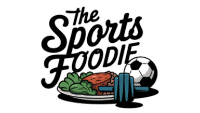Surprising fact: an athlete’s daily fuel can change by more than 30% across a season, yet many eat the same way every day.
I explain the basic concept so you can link your food plan to each training block and your goals. Periods split a season into blocks that alter intensity, volume, and frequency so the body adapts.
You’ll see a simple example of how macro needs shift from pre-season to competition as training rises. Daily eating should match easy, hard, and recovery days.
I cover nutrient timing before, during, and after workouts and practical steps you can use in a real kitchen. This approach helps your sport performance and makes meal choices clear and actionable.
Understanding the concept of nutrition periodization
This concept lets you match daily fuel to the demands of each phase. You change what you eat as training load and intensity shift. That makes your food plan practical and purposeful.
Simple definition: periodization is a phase-based approach that links meal choices to training blocks like base, build, competition, and transition. Macro needs shift with those changes to support energy, recovery, and body goals.

- Better performance: raise carbs on high-intensity days to protect output.
- Faster recovery: add carbs and protein after heavy sessions.
- Body composition: target lower carbs in low-load phases while keeping protein steady.
| Phase | Typical training | Macro focus | Daily variation |
|---|---|---|---|
| Base | Low-moderate volume, aerobic work | Lower carbs, steady protein | Small day-to-day changes |
| Build | Higher intensity and volume | Higher carbs, maintain protein | Match intake to hard days |
| Competition | Peak load, race prep | Max carbs around sessions | Fuel for intervals and races |
| Transition | Reduced load, recovery | Balanced intake, slight deficit if desired | Lower daily energy needs |
Quick example: eat more carbs on interval days and less on easy spin days. Track how you feel and tweak the plan to fit your needs and goals.
Training phases and matching intake across the season
Match each training block to a clear fueling plan so you stay strong and recover fast. The season splits into phases that demand different energy and timing.

Base phase: aerobic foundation and metabolic efficiency
Keep intensity low and build aerobic capacity. Use modest carbohydrate and steady protein. Avoid fasted training. Take 10–15 g protein before easy sessions to protect muscle and hormones.
Build phase: higher intensity and greater energy needs
Workouts add intervals and tempo. Raise total energy and carbs around hard sessions. Place carbs before and after these workouts to keep output high and speed recovery.
Competition phase: peak load, race prep, and fueling practice
Train at race pace and lock in your fueling script. Practice in-race feeds and hydration to reduce gut issues. Focus on timing as intensity rises.
Transition phase and taper considerations
Cut load and trim energy intake while keeping a balanced diet. Keep protein steady. In the 24–48 hours before race day, raise carbohydrate and lower fiber and fat for gut comfort.
- Adjust day-to-day: hard days need more fuel; easy days need less.
- Keep protein steady: supports repair and body composition goals.
- Practice fueling: make race-day scripts familiar.
| Phase | Main training | Fuel focus | Practical tip |
|---|---|---|---|
| Base | Low-moderate aerobic | Modest carbs, steady protein | Avoid fasted work; 10–15 g protein pre-easy |
| Build / Pre-season | Higher volume, intervals | More carbs around sessions | Carb before/after hard workouts |
| Competition | Race-pace, peak intensity | High carbs, practiced feeds | Lock hydration and fueling plan |
| Transition | Reduced load | Balanced intake, slight deficit | Keep protein; mind portion sizes |
Nutrition periodization for athletes
Practical targets make planning simple. Use grams per kilogram to set daily targets that scale with your body and training load.
Adjust carbohydrate, protein, and fat by phase
Raise carbohydrate first as energy needs rise. That supports high-intensity sessions and race days.
Keep protein steady to support repair and adaptation. Shift fat to help meet total energy while keeping pre-workout meals low in fat.
Use grams per kilogram ranges for endurance athletes
Below are clear ranges you can use per day. Pick within each range based on the next day’s key session.
- Pre-season: carbohydrate 3–7 g/kg, protein 1.2–2.5 g/kg, fat 0.8–1.3 g/kg.
- Competition: carbohydrate 5–12 g/kg, protein 1.4–2.0 g/kg, fat 1.0–1.5 g/kg.
- Fat percent: aim 20–35% of total intake year-round; use lower fat before hard sessions.
| Phase | Carbohydrate (g/kg) | Protein (g/kg) | Fat (g/kg) / % total |
|---|---|---|---|
| Pre-season | 3–7 | 1.2–2.5 | 0.8–1.3 / 20–35% |
| Build | 4–9 (adjust to sessions) | 1.2–2.0 | 0.9–1.4 / 20–35% |
| Competition | 5–12 | 1.4–2.0 | 1.0–1.5 / 20–35% |
How to use this: write daily targets into your plan, track weekly, and shift numbers toward the next phase based on energy needs and performance feedback.
Day-to-day adjustments, nutrient timing, and gut training
Small daily tweaks to your meals make big differences in workout quality and recovery. Use a simple week plan to raise energy on heavy sessions and lower it on easy days. That keeps training reliable and cuts unnecessary fatigue.
Low-intensity days versus high-intensity days
On easy days you eat less and keep carbs lower. Still hit protein to protect muscle and aid recovery.
On hard days you raise carbs around the key session. This keeps energy high and power steady.
Before, during, and after workout fueling
- Before: eat an easy-to-digest carb snack 60–90 minutes before a hard workout; limit fat and fiber.
- During: for long or intense workouts take carbs and fluids at steady intervals to protect output.
- After: within the first hour take carbs plus protein to speed recovery and restore glycogen.
Train-low and train-high strategies, and gut tolerance
Train-low sessions (low glycogen) can boost metabolic flexibility. Keep them short and easy to limit stress.
Train-high sessions surround hard work with carbs so you hit target pace. Practice this often to train your gut.
| Timing | Action | Example |
|---|---|---|
| Pre | Quick carbs, low fat/fiber | Banana + toast 60 min before |
| During | Carbs + fluids hourly | 30–60 g carbs/hr in drinks/gels |
| Post | Carb + protein within 60 min | Chocolate milk or shake + snack |
How to apply periodized nutrition in practice
Start your week by scheduling the toughest workouts early and matching meals to the load. This makes daily choices simple and purposeful.
Weekly example for endurance athletes
Monday: easy recovery day. Keep carbs lower and protein steady.
Tuesday (intervals): low-fiber, higher-carb meal 2–3 hours before. Take a small top-up 30–60 minutes prior. During, target steady carbs per hour and practice your race drink and gel plan. After, eat carbs plus 20–40 g protein within 60 minutes.
Body composition focus days without underfueling
Pick low-intensity sessions to trim carbs slightly. Keep protein high to protect lean mass. Do not cut so much that your next key training feels flat.
- Place hard workouts first; match higher carbs those days.
- Long rides: carb-rich breakfast, carbs during, solid meal after.
- Keep fat at 20–35% overall and lower it before hard sessions.
- Check logs weekly and adjust with a registered dietitian to match goals and performance.
| Day Type | Pre | During | Post |
|---|---|---|---|
| Easy | Modest carbs, protein | None or small sips | Balanced meal, colorful plants |
| Interval | Low-fiber + carbs 2–3 hr | 30–60 g carbs/hr as needed | Carbs + 20–40 g protein within 60 min |
| Long | Carb-rich breakfast | Regular carbs and fluids | Large meal to restore energy |
Conclusion
Think of the season as a roadmap that tells you when to raise and lower fuel. Use simple phase targets so daily intake matches the load and your goals.
Keep protein steady to protect muscle and use carbs around hard sessions to support performance. Drop fat pre-hard sessions to ease digestion.
Practice race fueling in training, try short train-low and train-high sessions, and review changes weekly. This way you support fitness and hit competition day confident, not guessing.
If you want tailored help, work with a registered dietitian who specializes in sports nutrition to lock a plan that fits your sport and life.


